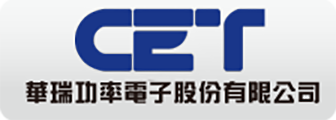- Ameya360 Component Supply Platform >
- Trade news >
- 'Cypress 3.0' Strategy Bearing Fruit
'Cypress 3.0' Strategy Bearing Fruit
Cypress Semiconductor Corp. reported record first quarter sales that beat analysts' expectations Thursday (April 27), offering tangible evidence that the company's strategy to target markets growing faster than the overall semiconductor industry is bearing fruit.
"Our revenue strength in the first quarter was across end markets, particularly from IoT, and NOR memory was stronger than we expected," said Hassane El-Khoury, Cypress president and CEO, in a conference call with analysts following the quarterly report.
El-Khoury said automotive was Cypress's strongest end market in the first quarter, with record sales and design activity. He said automotive sales now make up about one-third of Cypress's total revenue, up from just 11 percent of the firm's revenue in 2011.
El-Khoury, who took the helm of Cypress last August following the April resignation of Cypress Founder and longtime CEO T.J. Rodgers, calls his strategy for realigning the company around core growing markets "Cypress 3.0." The strategy revolves around both organic and inorganic growth, through both internal product development and deals such as the acquisitions of Spansion in 2015 and Broadcom's wireless IoT business last year.
Thad Trent, Cypress's chief financial officer, said on the analyst call Thursday that the strategy is resulting in revenue growth, gross margin improvement and operating leverage across the company.
"Our Q1 results reflect the actions we have taken to reorganize the company to align our solutions, our investments and our corporate structure with our go-to-market plan and our focus on high-growth areas of the automotive, industrial and consumer markets, including the Internet of Things and USB connectivity," El-Khoury said.
Cypress reported first quarter sales of $531.9 million, the highest quarterly revenue that Cypress has reported since spinning off SunPower Corp. several years ago.
First quarter sales were up slightly compared with the first quarter of 2016. Cypress reported a loss for the quarter based on generally accepted accounting principles (GAAP) of $45.8 million, narrowed from a GAAP net loss of $72.4 billion in the year-ago quarter.
Cypress's sales for the quarter exceeded both the company's own estimates and those of Wall Street's. The company's pro forma earnings per share of 13 cents also exceeded consensus analysts' expectations by a wide margin.
For the second quarter, Cypress said it expects sales to be between $530 million and $560 million, the midpoint of which is well above consensus analysts' estimates.
El-Khoury said Cypress expects continued strength in the second quarter in products "across the board." He noted that the company's status as a supplier to the automotive industry gives it great visibility into sales in coming months.
Online messageinquiry

Cypress expands collaboration with Arm to deliver IoT platform with secure device management

Cypress Caps Rebound Year With Strong Q4

Cypress HyperBus Set to Get Standards Stamp

Cypress CEO Enjoying 'High-Calorie Growth'
- Week of hot material
- Material in short supply seckilling
| model | brand | Quote |
|---|---|---|
| RB751G-40T2R | ROHM Semiconductor | |
| CDZVT2R20B | ROHM Semiconductor | |
| MC33074DR2G | onsemi | |
| TL431ACLPR | Texas Instruments | |
| BD71847AMWV-E2 | ROHM Semiconductor |
| model | brand | To snap up |
|---|---|---|
| BP3621 | ROHM Semiconductor | |
| IPZ40N04S5L4R8ATMA1 | Infineon Technologies | |
| TPS63050YFFR | Texas Instruments | |
| STM32F429IGT6 | STMicroelectronics | |
| BU33JA2MNVX-CTL | ROHM Semiconductor | |
| ESR03EZPJ151 | ROHM Semiconductor |
- Week of ranking
- Month ranking
Qr code of ameya360 official account
Identify TWO-DIMENSIONAL code, you can pay attention to


Please enter the verification code in the image below:






















